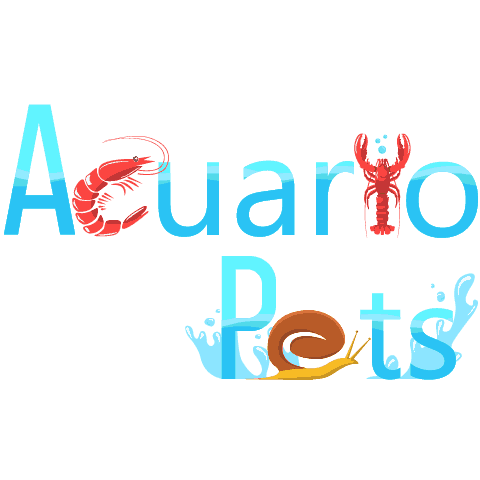This post was created with help from AI tools and carefully reviewed by a human (Muntaseer Rahman) . For more on how we use AI on this site, check out our Editorial Policy.
Check Out These FREE Tools We Made JUST For You!
What To Do If Your Bearded Dragon Fell, Got Bitten, or Looks Injured

Look, I’m just going to say it: watching your bearded dragon take a nosedive off your shoulder is one of those heart-stopping moments that makes you question every life decision that led to this point.
One second they’re chilling like a scaly parrot, the next they’re doing an Olympic-level dive toward your hardwood floor.
And the panic? It’s real.
The “Oh Crap, What Just Happened?” Moment
Here’s the thing about bearded dragons: they think they’re invincible.
They’ll climb anything, leap from anywhere, and generally act like they’ve got nine lives when they actually have one very fragile body.
Falls from significant heights can result in bone fractures or internal bleeding, and determining the extent of injuries can take several hours after the accident occurs.
That’s right – your beardie might look totally fine right after a fall and then crash hard hours later.
First Things First: Don’t Freak Out (Easier Said Than Done)
I know your heart is racing, but take a breath.
Your dragon is already stressed, and if you’re running around like a headless chicken, you’re just making things worse.
Pick them up gently – and I mean GENTLY – using your whole hand to support their entire body from underneath.
Think of it like you’re handling a water balloon filled with precious liquid gold.
Immediate Post-Fall Checklist
Right after your dragon takes a tumble, you need to check for these things:
- Are they breathing normally? Look for open-mouth breathing or gasping.
- Are they moving all four legs? Even a little wiggle counts.
- Is their beard turning black? Black bearding continuously is a very bad sign and could indicate serious internal issues.
- Are their eyes open and responsive? Sunken or half-closed eyes are red flags.
- Can they hold their head up normally? Head trauma is no joke.
The Sneaky Symptoms That Show Up Later
Here’s where things get tricky.
Your dragon might seem okay for a few hours and then BAM – symptoms appear.
Watch for these warning signs: leaving their mouth open frequently, refusing to eat, barely moving, losing weight, lethargy, decreased appetite, or unusual behaviors like falling over or losing balance.
Some bearded dragons have shown symptoms two months after a fall, so don’t let your guard down too quickly.
When You Need a Vet YESTERDAY
Alright, let’s talk about the “drop everything and find a reptile vet” situations:
| Emergency Sign | Why It’s Serious |
|---|---|
| Blood from mouth, nose, or anus | Possible internal bleeding or organ damage |
| Paralysis or dragging limbs | Spinal injury or nerve damage |
| Gasping or struggling to breathe | Collapsed lung, broken ribs, or respiratory trauma |
| Completely unresponsive | Shock, head trauma, or critical injury |
| Visible deformity or broken bones | Fractures requiring immediate treatment |
| Seizures or constant twitching | Neurological damage |
If you see blood in their stool, that indicates internal bleeding and requires immediate veterinary care.
Don’t mess around with this stuff.
The Bite Situation (Because Accidents Happen)
Let’s switch gears and talk about bites.
Whether your beardie got chomped by a feeder cricket with an attitude, another dragon, or accidentally bit themselves, you need to know what to do.
If Your Dragon Bit You
Any bearded dragon bite must be washed and cleaned because they can carry Salmonella bacteria in their feces, which can spread to their body and environment.
Wash it with warm water and soap immediately.
Apply an antiseptic like rubbing alcohol or Neosporin.
Slap a bandage on it and you’re good to go.
The bite itself? It’s more alarming than painful, and most bites only draw blood once in a blue moon.
Your bigger concern is infection, not the actual bite.
If Your Dragon Got Bitten
This is more serious.
Bite wounds are highly susceptible to infection and can become life-threatening if not treated properly.
Clean the wound immediately with diluted Betadine solution – mix Betadine 10% with water until it’s the color of weak tea.
Apply a thin layer of plain Neosporin (no pain relief additives).
Watch for signs of infection: increased redness, swelling, darkening skin, oozing from the wound, loss of appetite, or lethargy.
If any of those show up, vet time.
The Home Care Game Plan
If your dragon had a minor fall and isn’t showing emergency symptoms, here’s what you do:
Keep Them Warm and Calm
Remove all climbing decor from their enclosure and keep them somewhere flat to prevent more injuries.
If they’re over 6 months old, aim for 105°F basking spot and 80°F cool side.
If they’re not moving much, place them in the middle where it’s 85-90°F.
Minimize Handling
Every time you pick them up, you’re risking making things worse.
Support their entire body and keep their spine straight.
Use your hand to support their whole body from beneath to avoid letting their spine bend.
If you absolutely must move them, pretend they’re made of glass and spiderwebs.
Monitor Like a Hawk
Check on them every few hours for the first 24-48 hours.
Watch for signs like you would with a child who has a concussion: nausea, loss of balance, dilated pupils, lethargy.
Keep notes on their behavior, appetite, and bathroom habits.
Hydration Matters
Dehydrated dragons with sunken eyes or wrinkled skin can get 1 ml of water for every 50 grams of body weight per day.
For an adult weighing 400-500 grams, that’s 8-10 ml per day.
Use a syringe and go slowly – give them 3-4 ml at a time.
The Mouth Injury Special Case
If your dragon has a bleeding mouth and a black beard, they’re in pain and possibly have a broken jaw or tongue injury.
This is serious because they might not be able to eat.
A broken jaw could lead to rapid health decline as they can’t eat and may need emergency vet care.
You can apply a tiny amount of antibiotic ointment to external mouth wounds, but anything internal needs professional help.
What About Internal Bleeding?
This is the scary one because you can’t always see it.
Signs of internal bleeding include lethargy, loss of appetite, pale gums, blood in stool, and a distended (swollen) abdomen.
If your dragon fell badly enough to cause internal bleeding, you’d likely see other injury signs like bruising or broken limbs.
But here’s the catch: Some dragons with internal injuries don’t show external marks at all.
When in doubt, get them checked out.
Finding a Reptile Vet (Not Just Any Vet)
Let me be crystal clear: your regular dog-and-cat vet probably can’t help your dragon.
General and exotic vets are not good enough when dealing with reptile health issues and injuries.
You need someone who specializes in reptiles or exotics.
Search for “reptile vet” or “exotic vet” in your area and call ahead to confirm they treat bearded dragons.
Not all emergency veterinary clinics treat reptile patients, so always call first.
The Prevention Lecture (You Knew This Was Coming)
Look, accidents happen, but let’s be real about some things.
Hundreds of people have killed their reptiles by sleeping with them – collapsed lungs, broken ribs, suffocation.
Don’t let your dragon sleep in your bed, period.
If your beardie likes sitting on your shoulder, use a harness or don’t let them up there at all.
Remove sharp objects from their tank.
Make sure climbing furniture is stable and not too high.
Plan cage furniture carefully since bearded dragons love climbing and can fall from high spots.
The Brutal Honesty Section
Sometimes injuries are just too severe.
Spinal injuries are very serious, and delays in treatment can mean losing your beardie.
A hamster with a back injury seemed fine for days but eventually had to be put down because the injury was too severe.
The same can happen with bearded dragons.
If your vet suggests euthanasia, it’s not because they’re giving up – it’s because they’re trying to prevent suffering.
The “They Seem Fine” Trap
This is where people screw up.
Your dragon falls, looks okay, and you think “crisis averted.”
But symptoms can show up 26 hours after a fall, including gulping, half-closed eyes, and decreased movement.
Don’t assume everything’s fine just because they’re walking around.
A dragon fell and seemed okay but two months later was still not eating normally, had to be hand-fed, and lost significant weight.
Stay vigilant for at least a week.
When Money Is Tight (Real Talk)
I get it – vet bills are expensive.
But here’s my advice: Start putting away $20 from each paycheck into a pet emergency fund, and you’ll have vet money saved up in a couple months.
If you’re in a situation where you literally cannot afford a vet visit, at least call and explain the situation.
Some vets will work with you on payment plans.
Some vets can even come to you if transport is an issue.
But please don’t let your dragon suffer because of money.
The Bottom Line
Your bearded dragon falling or getting injured isn’t automatically a death sentence.
Many dragons recover from falls and injuries just fine with proper care.
But the key is acting fast and being smart about monitoring them.
Trust your gut – if something feels wrong, it probably is.
Any change in your bearded dragon’s behavior or appearance may indicate illness, so it’s important to visit an exotic veterinarian as soon as possible.
These little dinosaurs might act tough, but they’re counting on you to have their back when things go sideways.
Quick Reference: What To Do RIGHT NOW
If your dragon just fell:
- Check for emergency symptoms (breathing, bleeding, paralysis)
- Gently place them somewhere warm, flat, and safe
- Observe closely for the next 24-48 hours
- Call a reptile vet to discuss what happened
If your dragon was bitten:
- Clean wound with diluted Betadine (weak tea color)
- Apply plain Neosporin
- Watch for infection signs
- See a vet if it’s serious or showing infection
If you’re not sure:
- Take photos/videos of concerning behavior
- Call a reptile vet for advice
- Better safe than sorry – always
Your bearded dragon didn’t ask to fall or get hurt, but now they need you to be the calm, capable human who knows what to do.
You’ve got this.
About Author
Hello, I’m Muntaseer Rahman, the owner of AcuarioPets.com. I’m passionate about aquarium pets like shrimps, snails, crabs, and crayfish. I’ve created this website to share my expertise and help you provide better care for these amazing pets.
Disclaimer
This site is owned and operated by Muntaseer Rahman. AcuarioPets.com is a participant in the Amazon Services LLC Associates Program, an affiliate advertising program designed to provide a means for sites to earn advertising fees by advertising and linking to Amazon.com. This site also participates in other affiliate programs and is compensated for referring traffic and business to these companies.

